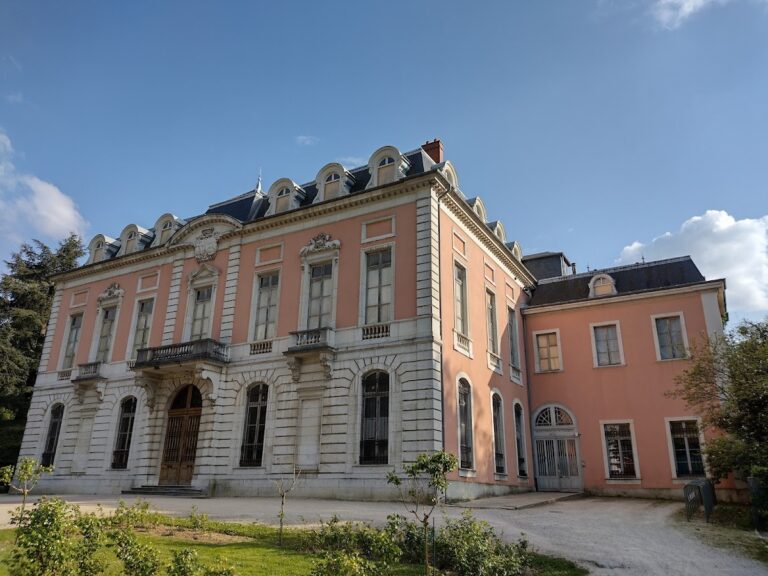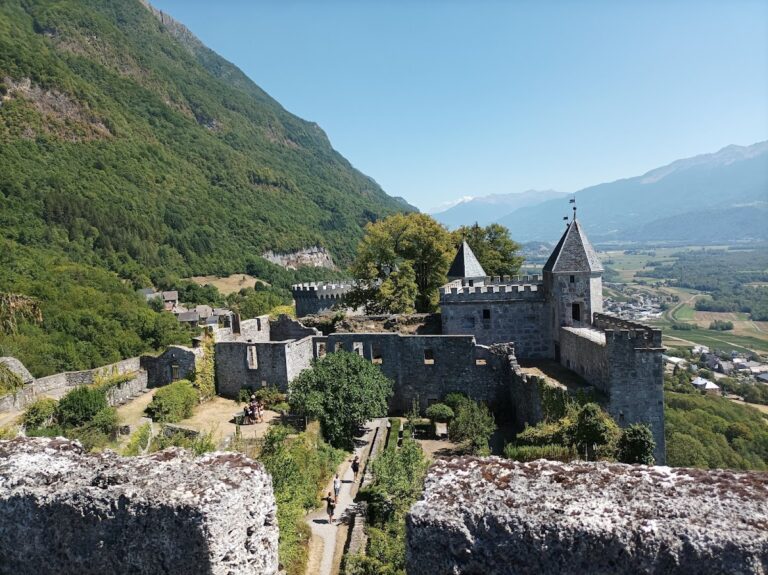Château des Comtes de Challes: A Medieval Fortress and Thermal Spa in Challes-les-Eaux, France
Visitor Information
Google Rating: 4.4
Popularity: Medium
Google Maps: View on Google Maps
Official Website: www.chateaudescomtesdechalles.com
Country: France
Civilization: Unclassified
Remains: Military
History
The Château des Comtes de Challes stands in the town of Challes-les-Eaux, France, and was originally built in the 13th century by Étienne de Challes. This medieval fortress served as the residence for the Counts of Challes, a noble lineage whose presence shaped the local region during the Middle Ages.
Following the death of Louis de Challes in 1590, who left no direct descendants, the estate passed in 1594 to Louis Milliet, Baron of Faverges. The Milliet family was an established noble house with roots in Savoy and origins tracing back to Geneva. Over subsequent generations, members of the Milliet lineage acquired and used various titles such as baron and marquis of Faverges, Challes, and Arvillars. The lordship of Challes remained under their control until the death of Henri Joseph Milliet de Challes in 1777.
During the period when the château was occupied by the Milliet marquises, it became notable for a connection with the philosopher Jean-Jacques Rousseau. Rousseau, in his autobiographical work Confessions, recounts providing music lessons to two daughters of the Milliet family, Catherine Françoise and Gasparde. This episode highlights the château’s role not only as a noble residence but also as a site of cultural activity during the 18th century.
After the passing of the last Marquis of Challes, ownership of the château reverted to the main Milliet branch in Faverges. In the years surrounding the French Revolution, the estate changed hands when Jacques-Antoine Balmain purchased it. Subsequently, the property came into the possession of Dr. Louis Domenget, who served as physician to the King of Sardinia and functioned as a local syndic, a kind of municipal official.
In 1841, Dr. Domenget discovered a mineral spring on the estate’s grounds. This discovery had a lasting impact on the community, leading to the commune adopting the name Challes-les-Eaux in 1872, reflecting the importance of the thermal waters. Recognizing their commercial potential, Domenget sold the château along with the mineral waters to the Société des eaux minérales de Challes. This company transformed the château into a hotel, building an additional structure that encompassed the medieval keep and developing thermal baths. The establishment operated as the Hôtel du Château, capitalizing on the site’s therapeutic springs.
In the 21st century, specifically in 2002, Gérard Trèves acquired the property, maintaining its function as a hotel and restaurant under the name Château des Comtes de Challes. The current management is overseen by his son, Florian Trèves, continuing the site’s centuries-old tradition as a place of hospitality.
Remains
The Château des Comtes de Challes is centered around a medieval donjon, a type of fortified tower typical of 13th-century castles. This original stone keep forms the core of the surviving structure and serves as a tangible link to the château’s medieval origins. Over time, especially during the transformation initiated by the Société des eaux minérales de Challes, a later building was constructed to envelop the keep. This adaptation allowed the historic fortress to function as part of a hotel complex.
The keep itself retains its essential medieval character, although specific architectural details such as measurements or decorative elements have not been documented in the sources. The integration of the old tower into the newer hotel building illustrates a continuous evolution of the site’s use while preserving important medieval features in situ.
Today, the château’s remains reflect this layered history. The medieval keep stands as the foundational element around which 19th-century extensions were developed for hospitality purposes. Although no detailed descriptions mention surviving ornamentation or inscriptions, the site’s fabric demonstrates a blending of medieval military architecture with later adaptations suited to commercial use.
This combination of preserved medieval structure and subsequent construction highlights the château’s enduring role within the community, from noble residence to thermal spa hotel. The architectural remains thus embody centuries of changing functions while anchoring the site’s historical identity.










